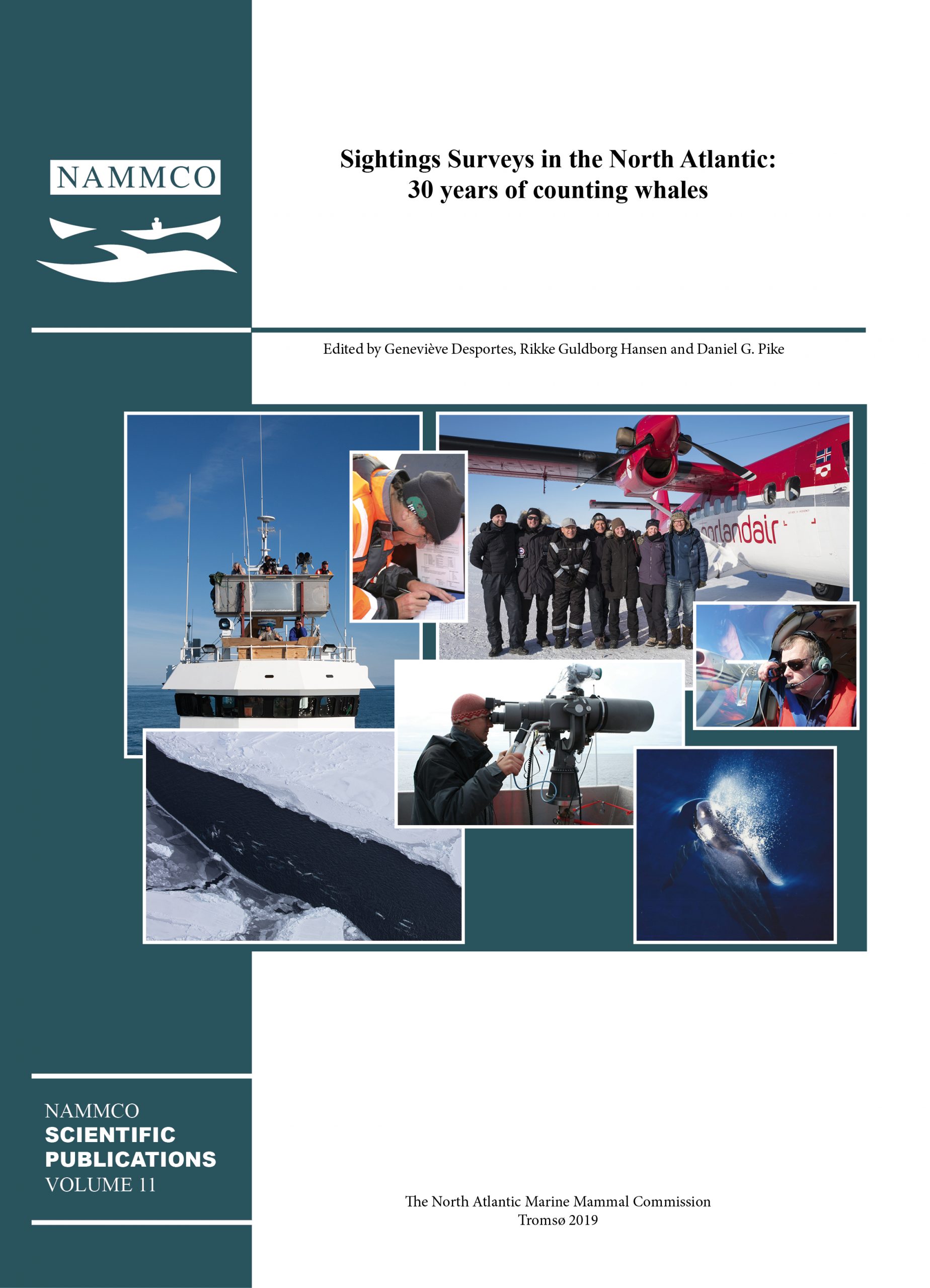3 December 2020: New Article on Killer Whale Distribution and Abundance
We are pleased to announce that the 10th article in Volume 11 of the NAMMCO Scientific Publications Series – Sightings Surveys in the North Atlantic: 30 years of counting whales has now been published.
The article, Distribution and Abundance of Killer Whales in the Central North Atlantic, 1987–2015, was authored by Daniel G. Pike, Thorvaldur Gunnlaugsson, Bjarni Mikkelsen, Gísli Víkingsson and Geneviève Desportes. This study closes the North Atlantic Sightings Surveys (NASS) series, which constitutes a fundamental source of information for NAMMCO and has been a flagship effort in its endeavour to provide sound management advice for human activities impacting cetaceans.
Abstract
The NASS, covering a large but variable portion of the Central and Eastern North Atlantic, were conducted in 1987, 1989, 1995, 2001, 2007 and 2015. Sightings of killer whales (Orcinus orca), a non-target species, were relatively rare in the Central Atlantic (Icelandic and Faroese) portions of the survey area. In cases where sighting numbers were insufficient, we pooled sightings over several surveys to derive a distance detection function and used this to estimate abundance using standard Distance Sampling methodology. Uncorrected estimates were produced for all surveys, and estimates corrected for perception bias were produced for the 2001 and 2015 surveys. Killer whales were sighted in all areas but were most common in the eastern part of the survey area. Uncorrected abundance in the NASS core area ranged from a low of 4,736 (95% CI: 1,842–12,176) in 1995 to a maximum of 15,142 (95% CI: 6,003–38,190) in 2001. The low precision of the estimates makes the detection of temporal trends unlikely. In 2007 an extension survey revealed relatively high numbers of killer whales to the east of the survey area, in conformity with Norwegian survey estimates in this area. The NASS and other surveys conducted over the period indicate that killer whales number in the low tens of thousands in the Central and Eastern North Atlantic.
The full article is available here.



